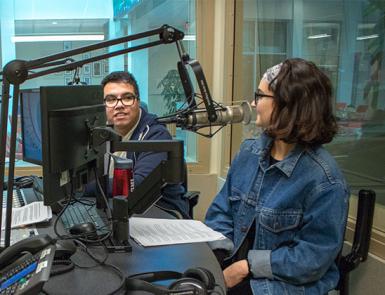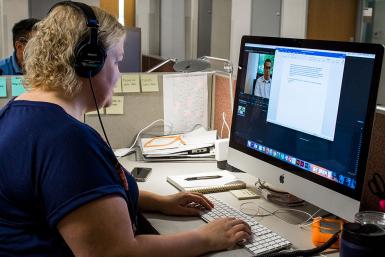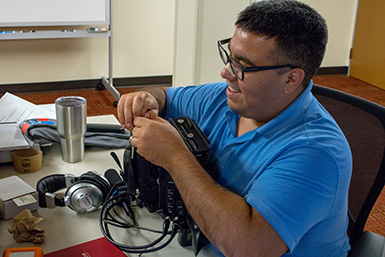Edwards, Saenz reflect on their accomplishments at IER

In 2018, The Media School collaborated with the Environmental Resilience Institute to launch the Indiana Environmental Reporter, an organization committed to environmental reporting in Indiana. The IER was created as part of Indiana University’s Grand Challenges project, Prepared for Environmental Change, launched by former IU President Michael McRobbie.
During its five years of existence, the IER has published more than 1,000 stories about environmental topics in 88 of Indiana’s 92 counties. More than 100 publications have used their stories. As the project concludes on June 30, reporters Beth Edwards and Enrique Saenz revisit their accomplishments with the initiative.
Edwards and Saenz were two of just five full-time environmental reporters in Indiana. They sought not just to report information about environmental change, but also to explain how environmental issues can impact people and communities.
“For example, I learned that if the state loses its wetlands, it’s going to cause problems for people downstream from those wetlands,” Saenz said. “There will be more flooding and more contaminants in their water. Communities will have to pay millions of dollars to replicate the functions of those wetlands.”
To Edwards, environmental reporting means informing the public of the risks so that they can make the decisions that are best for their families, with a focus on “the impact of environmental issues on underserved communities.”
Edwards’ work has gained recognition from several sources. She won first place in environmental reporting contests from the Woman’s Press Club of Indiana and the National Federation of Press Women. Her documentary, “In the Water,” about coal ash pollution in Indiana was selected to be shown at the Indy Film Fest and the Lulea International Film Festival in Lulea, Sweden.
“I was shocked when I found out we got into both festivals. For so long, I had been the only person to see it. It was this project that had lived on my hard drive, and now it was out in the world for people to see,” she said.
Her reporting on coal ash began with her first longer-form story, “The Price of Coal,” and is among some of her proudest works. She also takes pride in her story concerning confined animal feeding operations, “A Question of Scale,” and “Tainted Dreams,” which tells the story of Alex Firov, a survivor of Chernobyl’s nuclear power plant disaster in 1986.

“I get the impression from some people that they think reporting on the environment is trivial, like it’s just me writing about my favorite tree or something,” Saenz said. “But what happens to the environment affects our everyday lives.”
Fellow IER reporter Saenz has also received a commendation for his journalism work, winning first-place awards from the Society of Professional Journalists for reporting on social justice issues, business and consumer affairs, and government and politics. He was an honorable mention for investigative reporting in the national Society of Environmental Journalists awards.
For him, environmental journalism is about being aware of the world. He strives to report on the environment in a way that a general audience can understand. Because environmental stories can often include sciences that not everyone is trained in, he must find a way to make them more accessible.
“It’s not always easy, but it’s information that is crucial to getting people to know what companies in the state and our own government are doing for us and, sometimes, to us,” he said.
Saenz says one of his proudest works is his reporting on Indiana’s recent repeal of most protections for isolated wetlands. In his article, “Supreme Court Conservatives Rule to Drastically Reduce Protections for Wetlands,” he discusses the consequences of the decision and what it might mean for all Indiana citizens.
“It’s extremely important for Hoosiers to know the full effect of lawmakers’ decisions and if those decisions are made to help Hoosiers or for the lawmakers to benefit financially,” he said.

IER’s last day of operation is June 30, but stories will remain on its website until April 2024, free to be used with proper credit. Social media accounts related to IER intend to close on Sept. 30.
Both Saenz and Edwards are proud of the work they have done these past five years. As they move forward, they still carry a belief in the importance of environmental journalism, even if people are content with the outcome.
“My end goal in reporting is getting information to the people,” Saenz said. “If they’re happy with what’s happening, then fine. But they should know what’s happening.”

